- Home
- Quizzes
- My Quiz Activity
- Newsletters
- Sports Betting
- MY FAVORITES
- Add Sports/Teams
- SPORTS
-
NFL
- NFL Home
- Arizona Cardinals
- Atlanta Falcons
- Baltimore Ravens
- Buffalo Bills
- Carolina Panthers
- Chicago Bears
- Cincinnati Bengals
- Cleveland Browns
- Dallas Cowboys
- Denver Broncos
- Detroit Lions
- Green Bay Packers
- Houston Texans
- Indianapolis Colts
- Jacksonville Jaguars
- Kansas City Chiefs
- Las Vegas Raiders
- Los Angeles Chargers
- Los Angeles Rams
- Miami Dolphins
- Minnesota Vikings
- New England Patriots
- New Orleans Saints
- New York Jets
- New York Giants
- Philadelphia Eagles
- Pittsburgh Steelers
- San Francisco 49ers
- Seattle Seahawks
- Tampa Bay Buccaneers
- Tennessee Titans
- Washington Commanders
-
MLB
- MLB Home
- Arizona Diamondbacks
- Atlanta Braves
- Baltimore Orioles
- Boston Red Sox
- Chicago White Sox
- Chicago Cubs
- Cincinnati Reds
- Cleveland Guardians
- Colorado Rockies
- Detroit Tigers
- Houston Astros
- Kansas City Royals
- Los Angeles Angels
- Los Angeles Dodgers
- Miami Marlins
- Milwaukee Brewers
- Minnesota Twins
- New York Yankees
- New York Mets
- Oakland Athletics
- Philadelphia Phillies
- Pittsburgh Pirates
- San Diego Padres
- San Francisco Giants
- Seattle Mariners
- St. Louis Cardinals
- Tampa Bay Rays
- Texas Rangers
- Toronto Blue Jays
- Washington Nationals
-
NBA
- NBA Home
- Atlanta Hawks
- Boston Celtics
- Brooklyn Nets
- Charlotte Hornets
- Chicago Bulls
- Cleveland Cavaliers
- Dallas Mavericks
- Denver Nuggets
- Detroit Pistons
- Golden State Warriors
- Houston Rockets
- Indiana Pacers
- Los Angeles Clippers
- Los Angeles Lakers
- Memphis Grizzlies
- Miami Heat
- Milwaukee Bucks
- Minnesota Timberwolves
- New Orleans Pelicans
- New York Knicks
- Oklahoma City Thunder
- Orlando Magic
- Philadelphia 76ers
- Phoenix Suns
- Portland Trail Blazers
- Sacramento Kings
- San Antonio Spurs
- Toronto Raptors
- Utah Jazz
- Washington Wizards
-
NHL
- NHL Home
- Anaheim Ducks
- Arizona Coyotes
- Boston Bruins
- Buffalo Sabres
- Calgary Flames
- Carolina Hurricanes
- Chicago Blackhawks
- Colorado Avalanche
- Columbus Blue Jackets
- Dallas Stars
- Detroit Red Wings
- Edmonton Oilers
- Florida Panthers
- Los Angeles Kings
- Minnesota Wild
- Montreal Canadiens
- Nashville Predators
- New Jersey Devils
- New York Islanders
- New York Rangers
- Ottawa Senators
- Philadelphia Flyers
- Pittsburgh Penguins
- San Jose Sharks
- Seattle Kraken
- St. Louis Blues
- Tampa Bay Lightning
- Toronto Maple Leafs
- Vancouver Canucks
- Vegas Golden Knights
- Washington Capitals
- Winnipeg Jets
- NCAAF
- NCAAM
- Boxing
- Entertainment
- Lifestyle
- Golf
- MMA
- Soccer
- Tennis
- Wrestling
- More Sports
- RESOURCES
- My Account
- YB on Facebook
- YB on Twitter
- YB on Flipboard
- Contact Us
- Privacy Policy
- Terms of Service
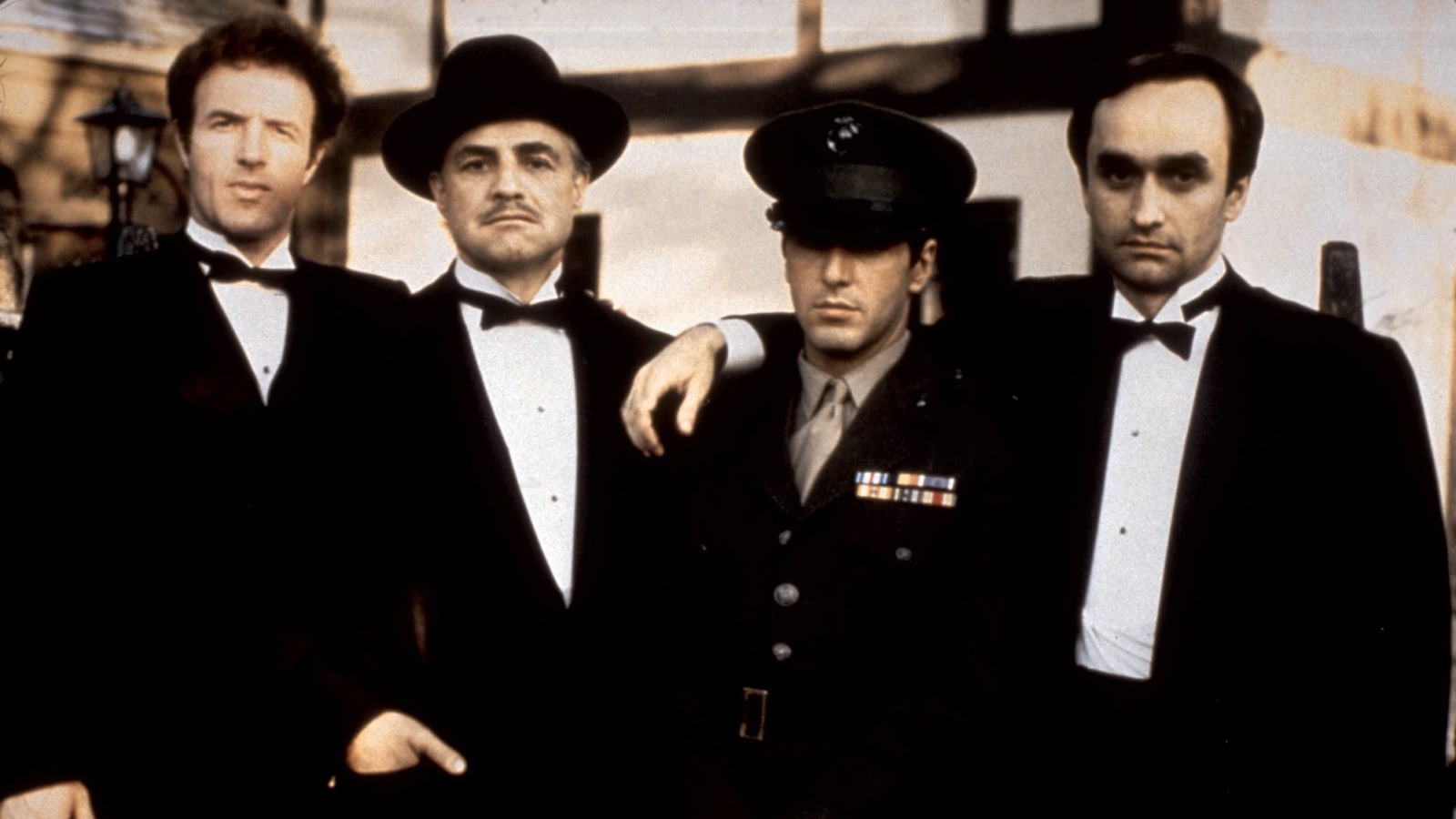
Beloved movies from the 1970s that still hold up today
Life moves pretty fast. Forty-plus years ago, moviegoers were flipping out over Great White Sharks, xenomorphs and Hells Angels. They worshipped Paul Newman, Robert Redford, Richard Pryor, Barbara Streisand and Marlon Brando. They flocked to theaters to escape the horrors of the day (e.g. Vietnam, Watergate, the Energy Crisis), and rushed back home in time to watch "The Tonight Show". It was a different time, but movies served the same purpose. They helped you process the unthinkable. As we go boldly into a new decade, let's hop back to an equally tumultuous time for films that still resonate today.
The Bad News Bears (1975)

Michael Ritchie’s underdog classic has inspired dozens of kid-skewing sports films over the last forty-plus years, but none of them, especially Richard Linklater’s awful 2005 remake, can equal the original’s blissfully un-PC sensibility. Walter Matthau is magnificent as an alcoholic pool cleaner recruited by a city councilman to coach a collection of undesirables in a Southern California little league. The team is a quarrelsome, multicultural patchwork that learns how to play together not by respecting each other’s differences, but via their shared hatred of the arrogant frontrunners. Yes, Buttermaker teaches them to be better ballplayers, but he does so drinking and smoking up a storm. And the whole team celebrates their hard-won second place finish by drinking beer. There’s never been anything like “The Bad News Bears”, and there never will be again.
Star Wars (1977)

Even in its galling CG upgrade, George Lucas’s landmark blockbuster stands out for its junky, handmade aesthetic. It’s the work of a daydreaming gearhead; the rebels’ vehicles, droids and gadgets are mostly beat up after years of battling the Empire, and the baddest ship in the galaxy, the Millennium Falcon, is a essentially a souped-up muscle car held together with spit and glue. This tactility carries over into “The Empire Strikes Back” and “Return of the Jedi”, but it’s utterly absent in the prequels (even in Watto’s scrap shop on Tatooine), and is almost impossible to find in sci-fi or fantasy nowadays. This is one of the key reasons why the Original Trilogy towers over the saga’s other entries.
American Graffiti (1973)
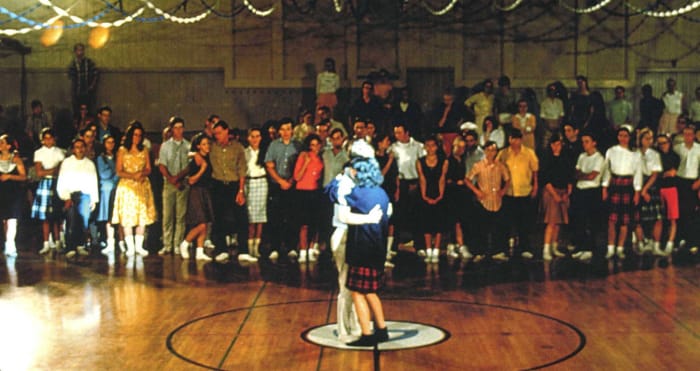
While we’re talking George Lucas, let’s not forget his sophomore feature set in his old Modesto, California stomping grounds. The film launched the Baby Boomer nostalgia industry with its wall-to-wall soundtrack of early-‘60s hits, but it resonates to this day for its unsentimental finale. In a gut-punch of an epilogue, we learn that Milner (Paul LeMat) got killed by a drunk driver two years later, Terry (Charles Martin Smith) went MIA in Vietnam the year after, Steve (Ron Howard) became an insurance salesman in Modesto and Curt (Richard Dreyfuss) is a writer living in Canada (where he likely moved to avoid the draft). As The Beach Boys’ “All Summer Long” plays over the end credits, we’re hit with the melancholy realization that we’ve just watched these four friends’ last moment of shared joy.
Jaws (1975)

The shark is still working. Steven Spielberg’s rip-roaring, horror-adventure hybrid has been America’s go-to 4th of July movie for years now (sorry, “Independence Day”), but it took on unexpected resonance this past holiday season in light of the country’s struggles with the coronavirus pandemic. Murray Hamilton’s glad-handing obeisance to Amity’s business community, which heavily relies on “summer dollars”, became a symbol of political fecklessness in response to a clear and present threat to the health of one’s constituents. Vaughn would rather keep the beaches open than lose office in November. Hopefully, this will all be the rearview when we sit down for our annual “Jaws” viewing next summer.
The Godfather Part I and II (1972) (1974)

Francis Ford Coppola’s mafia saga is the ne plus ultra of heightened American pulp. Whereas “Jaws” is still, at heart, a crowd-pleasing adaptation of a bestselling beach read, Coppola’s take on Mario Puzo’s novel transcends its tawdry origins. Taken as a whole, the first two movies remain the definitive dramatization of the immigrant experience in the United States. Young Vito Corleone flees Sicily for New York City, where he builds an empire that, we gradually learn, is no more disreputable than politics or so-called legitimate business. The film is still quoted ad nauseam in hip-hop, and referenced by filmmakers the world over.
Superman (1978)
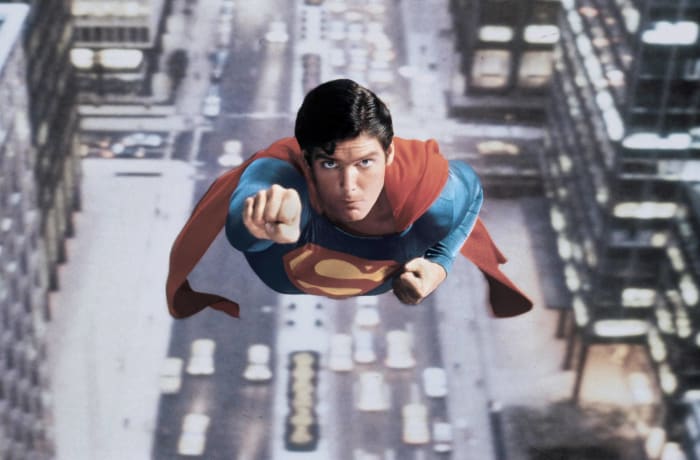
The visual f/x, once considered so seamless that the studio sold the film on them (“You will believe a man can fly”), haven’t aged particularly well, but the sheer physical scale of the movie combined with Richard Donner’s brilliant evocation of twentieth-century American mythology (as written by Jewish immigrants) endures to this day. The MVPs here are composer John Williams (operating at the height of his scoring powers) and, of course, Christopher Reeve; the latter’s ability to switch from a bungling Clark Kent to a stentorian Man of Steel is one of the most underrated performances of all time. People have always joked about Lois Lane’s inability to tell Kent from Superman, but Reeves’ nails both identities so effortlessly that we don’t question it for a second. The only superhero film that can match the widescreen cinematic power of “Superman” is “Spider-Man 2”.
Alien (1979)

Ridley Scott’s “The Old Dark Spaceship”. Though Dan O’Bannon and Ronald Shusett’s script takes narrative cues from Mario Bava’s “The Planet of the Vampires” and Fred M. Wilcox’s “Forbidden Planet”, Scott’s vision of a blue-collar crew getting pulled out of hypersleep to investigate a distress signal on LV-426 was both ultra-modern and industrial. The Nostromo’s environs are creaky and worn from use, while H.R. Giger’s creature design is at once repellant and sleek. The film also subverts narrative convention by killing off its ostensible hero, Dallas (Tom Skerritt), midway through the movie. We’re eventually left with Ripley (Sigourney Weaver), who would, thanks primarily to James Cameron’s “Aliens”, eventually become the big screen’s most iconic sci-fi heroine.
One Flew Over the Cuckoo's Nest (1975)

Nonconformity never goes out of style, but Miloš Forman’s rousing adaptation of Ken Kesey’s counterculture novel is a downright primal tale of resistance. The Lawrence Hauben/Bo Goldman screenplay hits all of the right notes, playing up the battle of wills between wild-man Randle Patrick McMurphy (Jack Nicholson) and the repressive Nurse Mildred Ratched (Louise Fletcher) as one man’s struggle to free his fellow kooks of their placating restraints. Jack Nitzsche’s saw-driven score is a perfectly weird complement to the film’s celebration of idiosyncracy.
Blazing Saddles (1974)

Contrary to conventional wisdom, you could absolutely make “Blazing Saddles” today. Mel Brooks’s western spoof (co-written with Norman Steinberg, Andrew Bergman, Al Uger and Richard Pryor) is a send-up of bone-stupid bigotry; yes, the epithets are often laugh lines, but they’re at the expense of the unenlightened characters spouting them. Our heroes, Cleavon Little and Gene Wilder, are wise outcasts who’ve consistently got the drop on their ignorant oppressors because their judgment isn’t clouded by hate. If you’ve ever watched “Blazing Saddles” in a racially mixed theater, you’ll see that this movie has the power to unite.
Fist of Fury (1972)

All of Bruce Lee’s 1970s movies (save for the unfinished “Game of Death”) are beloved because they comprise a tragically brief filmography of an Asian superstar who never got to take that next step. Lee’s biggest American hit, “Enter the Dragon”, hit theaters a month after his death at the age of thirty-two from a cerebral edema, but if you’re looking for Lee at his charismatic best, go straight to “Fist of Fury” (sometimes mistitled in “The Chinese Connection”) for the good stuff. Set in the early twentieth century, Lee plays a Chinese martial artist who returns to Shanghai to discover a Japanese sensei has taken over his deceased master’s dojo. When they disrespect his master’s teachings, Lee literally makes the Japanese sensei’s students eat their words. There was no one like Bruce Lee.
Nashville (1975)

Film-for-film, Francis Ford Coppola probably had the best run during the 1970s, but Robert Altman was so prolific that his greatness often gets taken for granted. Set aside the misses, and Altman’s got “M*A*Ş*H”, “McCabe and Mrs. Miller”, “The Long Goodbye”, “California Split”, “3 Women” and “A Wedding” over a ten year span. Smack dab in the middle of this run is “Nashville”, a panoramic masterpiece that captures the mood of the country politically and culturally as it staggered out from under its Vietnam/Nixon hangover. It’s entirely of its era, but instructive as to where we’re headed.
The Conformist (1970)

You think you’re not a fascist until one day you find yourself serving a fascist regime, at which point you cast aside previously held principles and adapt to the new normal. Bernardo Bertolucci’s masterpiece has long been celebrated for its gorgeous imagery (via cinematographer Vittorio Storaro), but it can no longer be viewed in a vacuum. What was once unthinkable is happening here, and this tale of a class-conscience individual committing murder to get along is frighteningly immediate.
Cabaret (1972)

More bad news from the ‘70s via the war in which hundreds of thousands of Americans perished to save civilization. Bob Fosse’s adaptation of John Kander and Fred Ebb’s musical won eight Academy Awards, but had the grave misfortune of running against The Godfather for Best Picture. Based in part on Christopher Isherwood’s dispatches from Germany’s Weimar Republic in the early 1930s, the film contrasts the era’s unabashed cultural freedom with the steady rise of fascism. One day, your every desire is attainable; the next, you’re being herded like cattle to your death. Beware.
All the President's Men (1976)

The initial miracle of Alan J. Pakula’s dramatization of Bob Woodward and Carl Bernstein’s dogged reporting on the Watergate scandal, which forced the resignation of President Richard M. Nixon, was that it riveted 1976 audiences as a white-knuckle, paranoid suspense thriller even though they knew exactly how it was going to end. Today, with over forty years of distance, it’s a time capsule of Beltway reporting; this duo cut through the muck and mire because they didn’t have allegiances. They were either going to get this story right, or never work in D.C., maybe anywhere, again. Nowadays, politicos are far savvier, while reporters are infinitely chummier. The public is the big loser.
Dawn of the Dead (1978)

George A. Romero’s shopping-mall-bound zombie flick is a museum piece in that people tend to shop from home nowadays (especially post-coronavirus). But as long as consumerism drives our economy, the metaphor works. The sequel to “Night of the Living Dead” drops two SWAT officers and a pair of TV news employees in a mall where zombies congregate because, it seems, that’s what they yearned to do when they were alive. Nothing motivates like the power of accumulating possessions. (It’s also worth noting that Tom Savini’s gore f/x are much more disturbing than today’s CG splatter.)
The Texas Chain Saw Massacre (1974)

Tobe Hooper’s viscerally terrifying tale of young hippies getting slaughtered by a cannibal family way off the beaten path in the Lone Star State has lost none of its power almost fifty years later. Though Leatherface is synonymous with Jason, Freddy and Michael as an iconic slasher, he’s anything but cartoonish here; his first appearance, which concludes with him dragging a victim into his abattoir and slamming shut a metal door, will scar your psyche. There’s no unseeing “The Texas Chain Saw Massacre”.
Halloween (1978)

John Carpenter popularized the slasher genre with this exquisitely shot-and-paced horror classic that remains one of the most profitable films of all time. The brilliance of “Halloween” is how it takes a common fear, and repeatedly makes it real. “Is that the bogeyman lurking behind a) the screen door, b) the shrubs in the neighbor’s yard, c) the shadows across the street?” Yes. He’s always there. And there’s no escape. Happy Halloween.
Coming Home (1978)

Hollywood didn’t really figure out how to deal with the national trauma of the Vietnam War until the 1980s, but this Hal Ashby drama about a paralyzed veteran (Jon Voight) who falls for the wife (Jane Fonda) of a recently deployed, true blue believer in the cause (Bruce Dern) gets at the personal toll in piercing fashion. Content-wise, it’s not terribly complex: Voight’s character was a gung-ho kid who charged off to Vietnam, only to discover the stated objective was nonsense; Fonda’s conservative housewife wants to support her husband, but, in volunteering with disabled veterans, realizes it’s all bull. Ashby, however, takes this potentially hackneyed material and makes it sting. His patience as a shooter and judiciousness as an editor are in perfect harmony.
The Exorcist (1973)

People used to fear the devil, but, prior to “The Exorcist”, they didn’t really worry about the devil getting up in their flesh and acting the fool. The key to William Friedkin’s watershed horror movie is that he found a perfectly adorable possession victim in Linda Blair, and paired her with the demonic voice of Mercedes McCambridge. Suddenly, the world knew what it looked and sounded like to have Satan inhabiting a loved one, and it was the most horrifying thought in the world. People walked out of “The Exorcist” scarred… and then they got right back in line for the next screening. Pleased to meet you.
The Sting (1973)

The only problem with a great scam movie is the setup. You’ve got blind your mark with a lot of narrative razzle-dazzle in order to knock them flat with an almost-impossible-to-predict reveal. George Roy Hill’s second film with Paul Newman and Robert Redford is more of a star turn than “Butch Cassidy and the Sundance Kid” (it’s a soundstage gig; they’re relaxed and Robert Surtees cinematography is worshipful), but David S. Ward’s script plays it cool. I prefer Michael Ritchie’s “Diggstown” in terms of payoff, but this is skillful stuff. Marvin Hamlisch’s rendition of Scott Joplin’s “The Entertainer” made life a (well-tipped) living hell for many a bar pianist.
Gimme Shelter (1970)
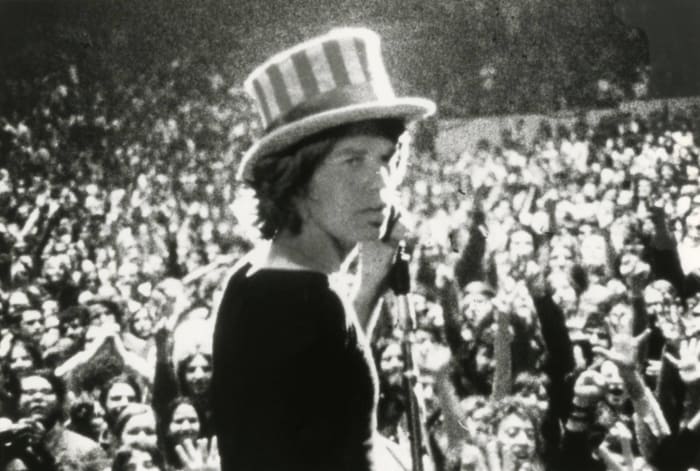
Whatever the hippies were trying to do in the late 1960s, it all ended on December 6, 1969 at the Altamont Speedway. Vibing off the peace-and-love happening that was Woodstock, The Rolling Stones decided to hold a free concert with security provided by Hells Angels. The revelries get off to an inauspicious start when the bikers knock Jefferson Airplane’s Marty Balin out cold, and get considerably worse when they murder an armed eighteen-year-old during the Stones’ set. What went wrong? We’re still trying to figure that out.
Monty Python and the Holy Grail (1975)

Silliness reigns supreme in this shotgun satire of the Arthurian legend. It’s tough to pin down Monty Python’s core audience nowadays; once upon a time they were travestying intellectualism, but their smarty-pants irreverence is well beyond the ken of today’s low-aiming sketch comedy troupes. Dan Harmon and Justin Rowland’s “Rick and Morty” is probably the heir apparent to this type of humor. In any event, people are still quoting the Black Knight, the Frenchmen and the bridgekeeper. Viva Python!
Day for Night (1973)

François Truffaut won the Oscar for Best Foreign Language Film in 1973 for this hugely entertaining showbiz satire, which has been oft-imitated but never equaled. Truffaut plays himself as the confounded director, while his on-screen surrogate, Jean-Pierre Léaud, turns up as a spoiled movie star. It’s a wonderful movie about a difficult process that, at its best, produces magic. Truffaut is clearly taken with Jacqueline Bisset, who steals most scenes as a starlet faintly removed from herself. It’s a cheerful film. Truffaut isn’t grinding an axe; he’s celebrating his craft.
Network (1976)
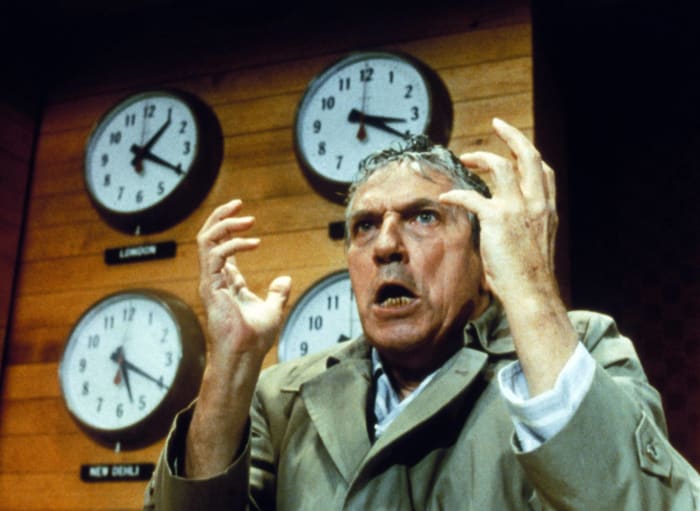
You’re probably tired of hearing how Pȃddy Chayefsky nailed the corrupting, corporate influence of television with “Network”, but, well, he really did get it right. He gets a bit monologue crazy, particularly with Ned Beatty’s grandstanding excoriation of Peter Finch’s mad prophet of the airwaves, but what played like a half-believable cartoon in 1976 is, more or less, our world in 2020.
Sounder (1972)

This is one of the greatest “family films” ever made. It’s about sharecroppers in 1930s Louisiana who have to fight prejudice and the effects of the Great Depression to keep their heads above water. Paul Winfield and Cicely Tyson are sensational as the parents, both of whom endure unconscionable humiliation while trying to give their children a slim chance at something better. “Sounder” should be screened in every elementary school.
Jeremy Smith is a freelance entertainment writer and the author of "George Clooney: Anatomy of an Actor". His second book, "When It Was Cool", is due out in 2021.
More must-reads:
- The 25 worst blockbusters of all time
- Beloved movies from the 1980s that still hold up today
- 21 celebrities who have degrees in their back pockets
Trending in Entertainment
Customize Your Newsletter
 +
+
Get the latest news and rumors, customized to your favorite sports and teams. Emailed daily. Always free!
Use of this website (including any and all parts and
components) constitutes your acceptance of these
Terms of Service and Privacy Policy.

